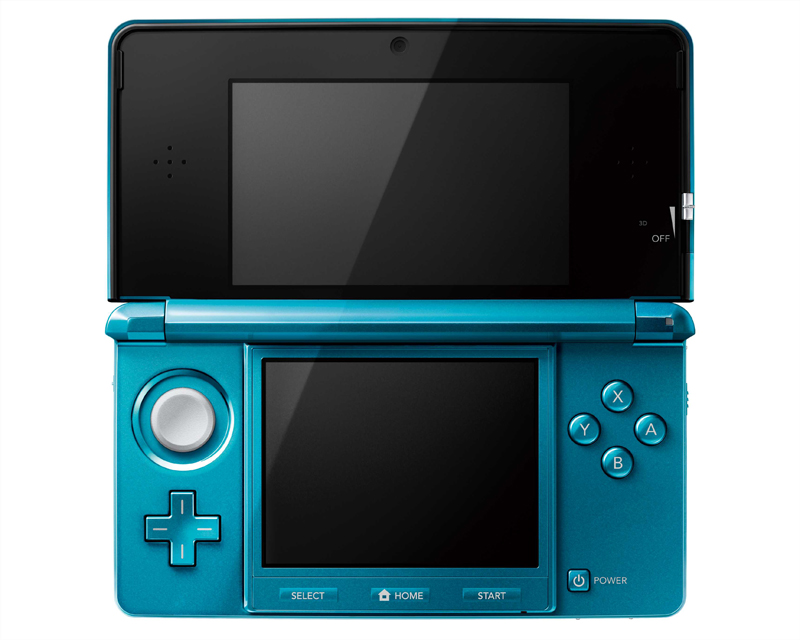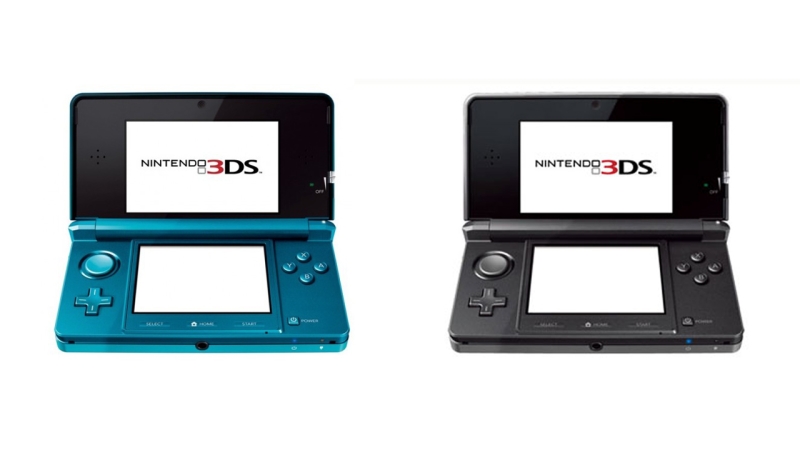Babes, Zombies, Ken and Ryu: How London Got A Taste Of The Nintendo 3DS
![]() I don’t know about you, but when someone says “Nintendo” to me, I don’t automatically think “super vixens” and “the zombie apocalypse”. But then, until last weekend, I’d never been to a Nintendo event held in an old brewery in the trendy Whitechapel area of East London.
I don’t know about you, but when someone says “Nintendo” to me, I don’t automatically think “super vixens” and “the zombie apocalypse”. But then, until last weekend, I’d never been to a Nintendo event held in an old brewery in the trendy Whitechapel area of East London.
Brick Lane on a Saturday is a haze of red lipstick, artfully frayed silk and vintage cigarette holders, so perhaps I shouldn’t have been surprised when I was greeted at the door of The Old Truman Brewery by a team of foxy women with swishy hair and high heels. Still, gaming doesn’t often attempt to be glamourous (no, Final Fantasy cosplay is not glamourous), so it was with curiosity that I allowed myself to be ushered up the Truman Brewery’s stairs to a whitewashed, windowless gallery.
Here, about fifty other people were milling around, staring at the floor and giggling. I looked down, and saw that multi-coloured lights were being projected wherever they set their feet, making it look as though their footsteps were creating ripples of light on the ground. Stepping forward, I watched as multi-coloured circles bubbled up around my boots.
This was an archetypal Nintendo toy: simple, colourful, obvious, and the perfect leveller for the diverse collection of people who’d decided to spend their Saturday afternoon playing with arguably the most significant hardware release of 2011. “Everyone is welcome”, the lights seemed to chant, “come and have a play”.
Perhaps it was my hangover, but I found this message rather more encouraging than the two men behind me, who were grumbling about how the event was clearly aimed at “casual” (snort, scoff etc) gamers.
No shit, Sherlock. Hey, you want hardcore, maybe avoid developers that put Girls Aloud and Jedward in their adverts.
Anyway, once it appeared that all the ticket-holders for our timeslot had arrived, the light projector was turned off and we were led through to a darkened room with a straw hut in one corner. A man in white sat ouside on a red cushion.
He looked as though he was going to give a speech, so everyone stopped talking, but then another man (blonde, red judo suit) emerged and proceeded to pretend to beat him up. Oh, right, they’re meant to be Ken and Ryu from Street Fighter. They continued their choreographed fight for about a minute (sadly no Hadouken, but you can’t have everything) before freezing mid-fake punch.
Then the lights went down and a brunette carrying a plastic AK-47 rushed in.
“There’s been an outbreak of a deadly virus in the building,” she gasped, “and we all have to evacuate as soon as possible. Grab the hand of the person next to you and don’t let go, no matter what!”
Oh, great. Audience participation and touching. Two things I play videogames to avoid.

Everyone reluctantly grasped the hand of the person next to them and shuffled awkwardly into the next room where a couple of “zombies” were mooching around. They lurched in our direction, but the brunette breathlessly funnelled us into a large room lined with televisions before we could look too closely at them. We wiped our hands on our jeans and gazed at the monolithic screens.
Now, as I’ve already said, the Nintendo 3DS is a revolutionary piece of technology. It is a portable and (fairly) affordable console that uses autostereoscopy to render 3D images without the need for 3D glasses. It is a magnificent achievement, and its release has been long anticipated, not least (one would hope) by the people in this room who gave up their Saturday afternoon to go and play with it.
So why on earth do we have to sit through a ten-minute video of Jonathan Ross (whose face I could probably have lived quite happily without seeing stretched across a 52″ television) telling us how amazing it is? I know the 3DS is wonderful. That’s why I’m here, in Brick Lane, hungover, instead of at home under at duvet.
I understand that Nintendo strive to make their products approachable and friendly, and that’s why their adverts feature Louise and Harry Redknapp, but once you’ve got a captive audience, is it really necessary to batter them into submission with oppressive chumminess and rubbish zombies? Talk about mixed messages.
Once the baffling Jonathan Ross extravaganza had finished, Minxy Brunette #2 wafted through a curtain.
“Do you all want to see the Nintendo 3DS for yourselves?”
Yes, yes I do. That is why I am here.
“Well, what are you waiting for!”
Um, for that Jonathan Ross thing for finish?
Geez.
Yet another curtain was pulled back, and the festering pile of resentment that had been building up inside me disintegrated, for we were suddenly standing in an enormous room lined with about about a 100 or so Nintendo 3DS consoles, each standing on top of its own plinth.
I ran forward, and picked up the first one I could see that didn’t have a sports game inside it, and allowed my mind to be boggled.

Part of the 3DS’s mystic allure is the fact that it really must be seen to be believed. It can be neither photographed nor filmed, because the effect is only visable with binocular vision. The only way to experience it to play with one yourself (which begs the question of why I am writing this, but never mind). I can at least tell you that it looks like a compact version of the 3D films at the cinema, but it’s more impressive because a) you’re not wearing glasses, b) you can adjust the depth with a slider and c) Avatar is rubbish.
The first game I played was LEGO Star Wars, which perfectly illustrated the advantages of 3D gaming. You see, whereas the two-dimensional platformer is a near-perfect form, three-dimesional platformers (not two-dimensional platformers rendered in 3D, obviously) can be frustrating because it can be difficult to judge the angle, direction and power needed to make jumps either towards or away from the camera.
Being able to view the environment in 3D means you can easily judge the distance and angle of objects that you need to get to, greatly reducing the amount of times you die needlessly by jumping too far, or not far enough.
That, and the whole game just looks incredible.
Next up, Resident Evil: Mercenaries. I’m less impressed by this. As a third person shooter, Resident Evil doesn’t suffer the same annoying depth issues as the original LEGO Star Wars, so although the game looks great in 3D, the gameplay is nothing to write home about.
The same goes for Rabbids Travel in Time, a nice side-scrolling platformer that is not functionally improved by being rendered in 3D.
Interestingly, perhaps the most visually impressive game on show is the oxymoronic Street Fighter IV: 3D Edition, a 3D version of a game whose entire raison d’être is its two-dimensionality. It’s basically just Street Fighter IV, except every battle is preceded by the option to turn on “dynamic mode” whereby the camera is placed behind the right shoulder of the player’s character. This doesn’t change the gameplay at all, but it makes the 3D effect even more spectacular.
Still, although the visuals of these games are enhanced (making them slightly easier, in the case of Lego Star Wars), not one has gameplay that is dependent on 3D functionality. Impressive though the 3D effect is, the games in this room have yet to convince me that autostereoscopic technology will revolutionise gaming, handheld or otherwise.
Then I potter into the next room, and I begin to see what all the fuss is about.
You’ve heard of augmented reality, right?

Included with most new versions of the console will be a set of six “Arcards”, printed with images that function like barcodes. Place a card on a flat surface, and the 3DS can pinpoint its position using its two cameras. Keep watching the screen, and you’ll suddenly see all manner of objects spring out of the table right in front of you.
The Arcard I played with caused various targets to spring up, and I had to shoot them down. When a target was facing away from me, I simply had to move the DS around the table to face it before shooting it down. Eventually, a dragon emerged from a hole right next to my pen, and I had to blast away at its armour before it collapsed.
Augmented Reality is an absolutely stunning effect. Although the inital six Arcards are only minigames, the potential for this technology is hugely exciting. One of the women showing me the game told me that a separate Arcard release was planned for later in the year, with many more cards and minigames.
No less impressive was Face Raiders, a game where your own face is morphed into an bulbous monster which you have to destroy. This is made all the more amusing by the fact that the game uses your real-life location as a backdrop. Like Arcards, Face Raiders requires players to move the console around to “see” enemies that might be lurking behind them.
Face Raiders reminded me very much of the GameBoy Camera, which allowed you to populate minigames with images of themselves. Aside from being in colour and 3D, Face Raiders also builds on its predecessor by determining your gender from the first snap.
I suppose I only have my inept camera skills to blame, but I couldn’t help but be a little upset when the 3DS analysed the picture I took of myself and proudly bleeped “Baby Boy!”. Thankfully, one of the Nintendo ladies was on hand to align my face properly and give the console a chance to redeem itself.
Twenty hilarious minutes later, and my time with the 3DS was up. It’s perhaps unsurprising that Nintendo’s own titles are more exciting prospects than those by third-party developers (as is the case with the Wii), but the potential for third parties to take on the premise of augmented reality is huge. How long before we are guiding the Rabbids along our kitchen tables?
As I made my way out of the building through a door held open by a pair of black-clad Nintendo-vixens, I was stopped by a cameraman and asked for a soundbyte.
“If you could describe how the Nintendo 3DS makes you feel in one word, what would that word be?”
I paused, blocking Jonathan Ross’ face from my mind.
“Optimistic”, I say. “Optimistic for the future of gaming”.




